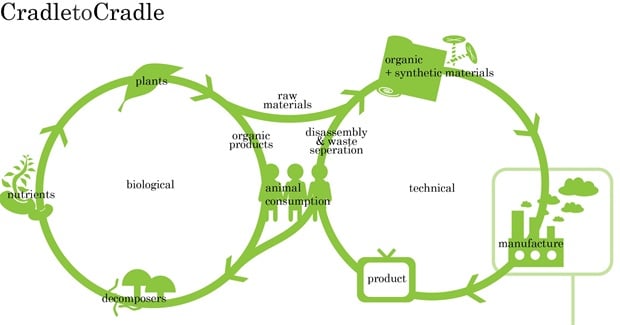
Imagine a world in which all the things we make, use, and consume provide nutrition for nature and industry—a world in which growth is good and human activity generates a delightful, restorative ecological footprint.
While this may seem like heresy to many in the world of sustainable development, the destructive qualities of today’s cradle-to-grave industrial system can be seen as the result of a fundamental design problem, not the inevitable outcome of consumption and economic activity. Indeed, good design—principled design based on the laws of nature—can transform the making and consumption of things into a regenerative force.
This new conception of design—known as cradle-to-cradle design—goes beyond retrofitting industrial systems to reduce their harm. Conventional approaches to sustainability often make the efficient use of energy and materials their ultimate goal. While this can be a useful transitional strategy, it tends to reduce negative impacts without transforming harmful activity. Recycling carpet, for example, might reduce consumption, but if the attached carpet backing contains PVC, which most carpet backing does, the recycled product is still on a one-way trip to the landfill, where it becomes hazardous waste.
Read more: http://www.filmsforaction.org/news/the_cradletocradle_solution/























